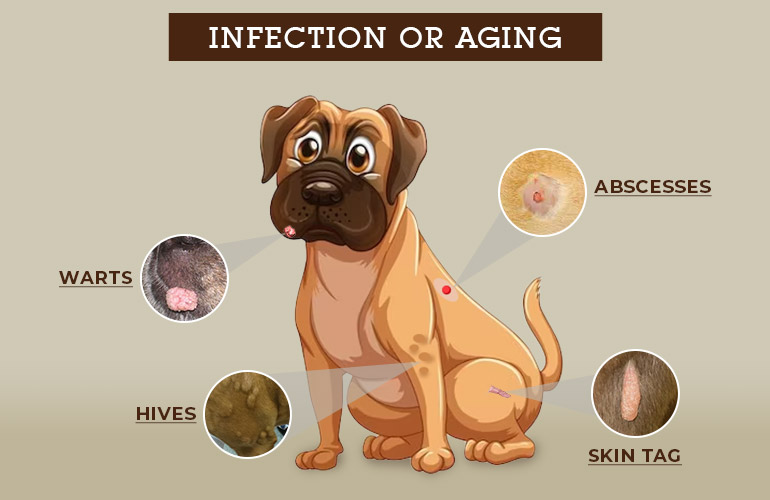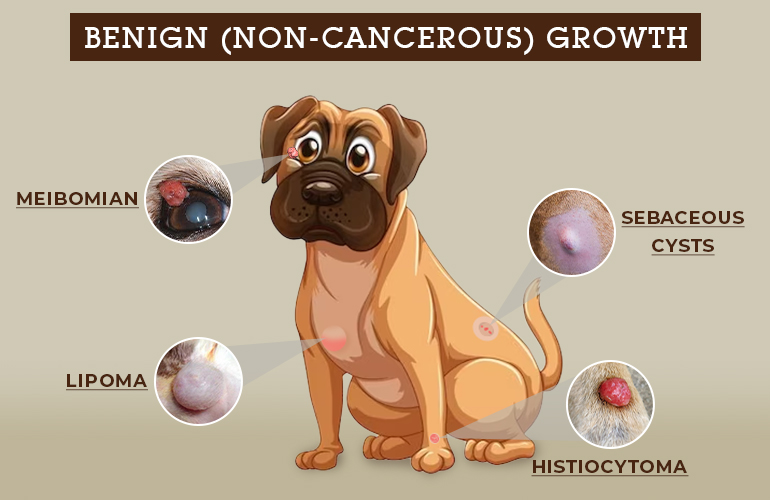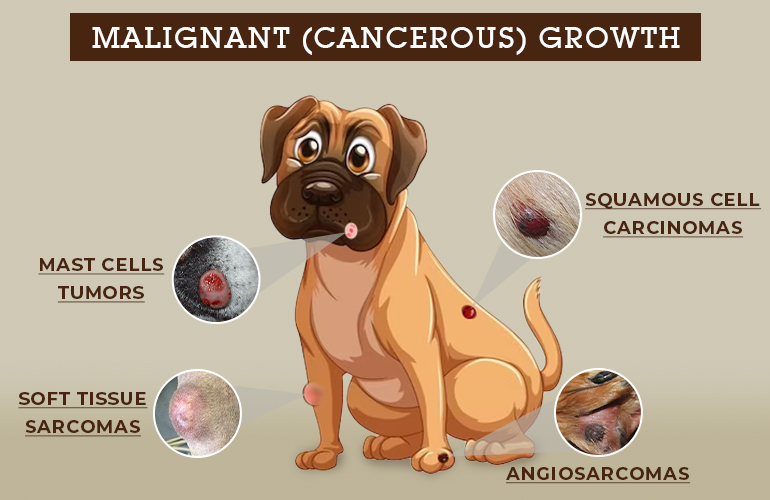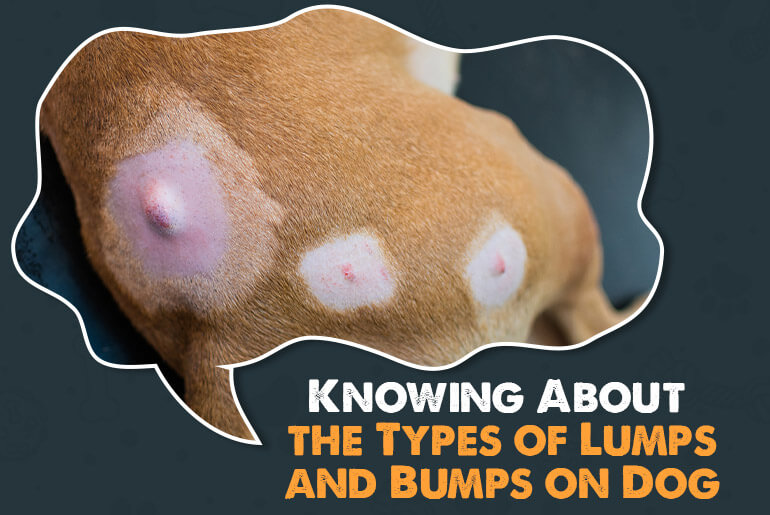You feel a lump when petting your dog that you don’t remember ever being there before. In your distress, you attempt to recall whether you’ve petted your dog in this spot before, but you are unable to do so. Try not to be too frightened because it can just be nothing.
Your dog’s overall health gets reflected on their skin in the form of lumps and bumps, and so there can be various possible causes for bumps. Some can be signs of normal aging and others can have an underlying cause; not every lump or bump is due to cancer.
Here we have discussed a few reasons why your pooch can have lumps, and knowing how to check for bumps or lumps around your dog’s eyes and ears, can help you rule out certain plausible reasons!
What Causes Lumps and Bumps on Dogs’ Skin?
There can be various reasons why your dog can have lumps and bumps, some of the common ones are:
- Inflammation or swelling due to insect bite or bacterial infection
- Allergic reactions
- Scar tissues after vaccination
- Signs of aging
- Cysts
- Cancerous growths
- Non-cancerous growth
Usually, the lumps and bumps caused due to inflammation, allergic reactions, or scared tissues should go away in a few days or weeks; and they are not a serious cause of worry.
If the lump is accompanied by other symptoms like vomiting, diarrhea, pain, lack of appetite, and other abnormal behaviors it can be an internal illness. In this case, visiting your vet would be the wise choice.
Types of Lumps and Bumps
The skin bumps that you find on your dog fall into several categories. Some are more common in senior dogs; some are caused due to infections or other non-cancerous conditions. Though it is always best to check with a veterinarian for a diagnosis and to determine the course of treatment; understanding some basic differentiation between them can be beneficial.
Infection or Aging

1. Abscesses
These are swollen lumps that are caused due to accumulation of pus. It can be a result of an infection of any kind- bacterial, fungal (ringworm), insect bite, or a dirty open wound. These may feel firm or squishy and are painful. Your vet can drain the abscess, clean the area with antiseptics and prescribe antibiotics for them.
2. Warts
Caused by a contagious viral infection, warts grow on the face, eyelids, mouth, lower legs, feet, and the footpads- between toes. They usually have a cauliflower-like appearance and can grow along or in clusters. These are highly contagious between dogs and are common in puppies or dogs that have low immunity. They eventually go away in a few months, but you can consult a vet for providing relief to your pet.
[Also Read] Common Skin Problems in Pets and How to Treat It
3. Hives
These are similar to the ones that appear on people; appear as a rash of round red bumps and the skin around that itches. It can be caused due to an allergen or a bee sting and often resolve on its own. You can use some soothing paste or solution to provide relief.
4. Skin Tag
They are the overgrowth of connective tissues, usually found in places where a dog’s skin rubs together. They are the same color as the skin and are extended out from the skin. Generally, these go away by its own and no treatment is required. Skin tags are common in older dogs and they can be removed surgically if it becomes bothersome.
Benign (Non-cancerous) Growth

5. Lipoma (Fatty Lumps)
These are soft and round lumps of flesh, found beneath the skin. They are entirely made up of fats and are usually found in older or overweight dogs. These fatty lumps are not painful and grow very slowly over a few months, but if you notice any pain or hindrance to normal movement, your vet might suggest removing them.
6. Sebaceous Cysts:
These can look like pimples or warts; they are hard to touch and can sometimes become red and sore. They are developed due to blocked oil glands and release white pus when burst. When left untreated they don’t usually cause discomfort to your dog, unless they get infected. These are more commonly found in breeds with fine hair and have the potential to disappear on their own.
7. Histiocytoma (Button Tumors):
These are benign tumors that can affect pups and dogs between the ages of 8 weeks to 3 years. The lumps look like red buttons, found particularly on your pup’s limbs. This overgrowth is caused due to hyper-response of the immune system. Normally they go away on their own, but you should still get it checked by your vet as they can imitate nasty cancerous tumors very well.
8. Meibomian
This is a slow-growing benign red bump that forms in the Meibomian gland, a secreting gland at the edge of the eyelids. It can grow out into the eyelid or stick out from the edge and become inflamed, painful, or become ulcerated. This can also cause inflammation of the cornea and conjunctiva in your dog. If the bump grows in size it can cause extra tearing in the eyes and the vet can suggest removal with surgery.
[Also Read] What is Melanoma in Dogs and How To Treat It?
Malignant (Cancerous) Growth

9. Mast Cells Tumors:
These cancerous tumors can be found on the top or beneath the skin. They appear in irregular shape and are solid to touch and are most common in dogs older than 8 years of age. They are caused due to compromise in immune system blood cells. On observing such bumps on your canine, your vet should be consulted immediately.
10. Soft Tissue (Fibro) Sarcomas:
These are tumors of the skin’s connective tissues, invasive to surroundings, and common in large breeds. They appear as firm or semi-firm lumps under the skin or deep within the muscles and are usually not painful. On consulting with the vet they can suggest surgical removal, but regrowth can occur too.
11. Squamous Cell Carcinomas
These can appear in two places on your dog, either on the surface of the skin- mostly near the mouth or under a nail; these bumps can be found in mostly hairless areas. They appear to be firm, raised, irregular, and ulcerated; mostly are solitary but prolonged exposure to the sun can develop them into multiples. If left for long can cause deformities and pain, and can spread to other organs as well.
12. Angiosarcomas
These are highly malignant blood vessel tumors that can vary in appearance. Red lumps can be seen on the skin but can also appear as poorly defined bruises. These grow rapidly and destroy the surrounding tissues and may spread to the lungs and liver. This is another type of cancer that spreads because of prolonged exposure to the sun. Moreover, the breeds with short, white coats are more at risk as compared to pets with dark, long coats.
[Also Read] How to Take Care of Your Dogs Through All Life Stages?
Bottom Line,
There are many reasons why your furry friend can have lumps and bumps on him, some most common reasons being insect bites and allergic reactions. When you find such growth on your pooch it is helpful to know the certain basic types of bumps to rule out whether the condition is serious or not. At any stage, if your dog seems bothered and the lump is growing, it is recommended to get it checked out by a veterinarian.
The earlier the bump is diagnosed, the easier would be the treatment!





